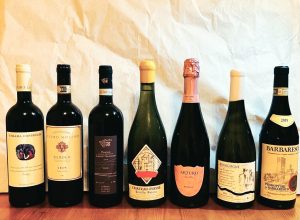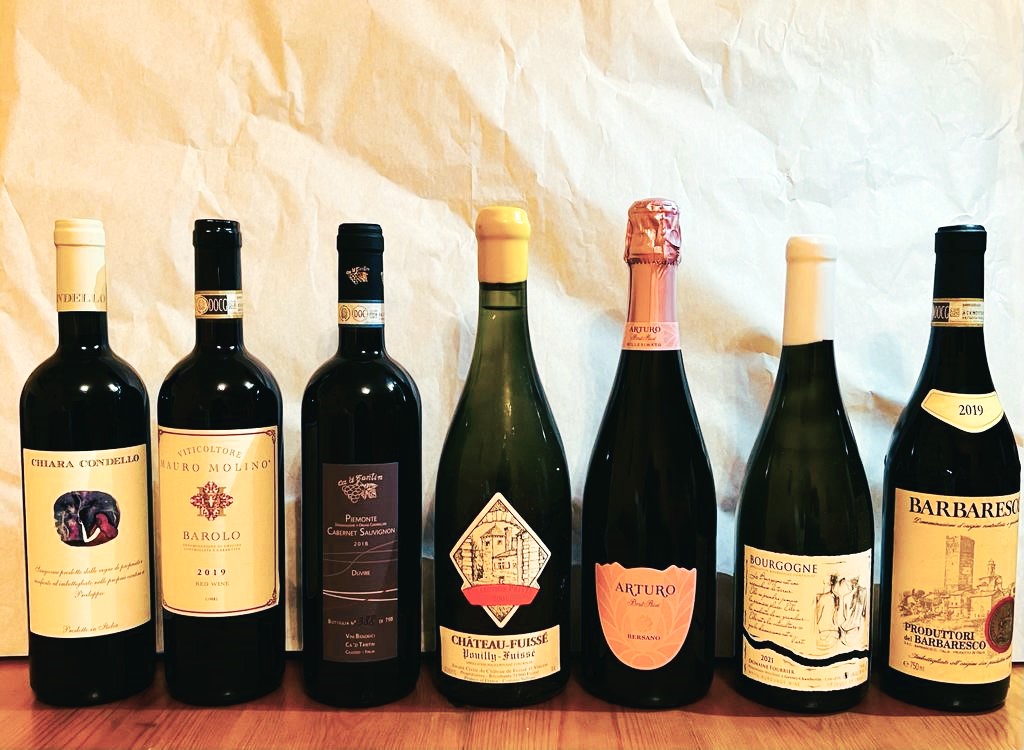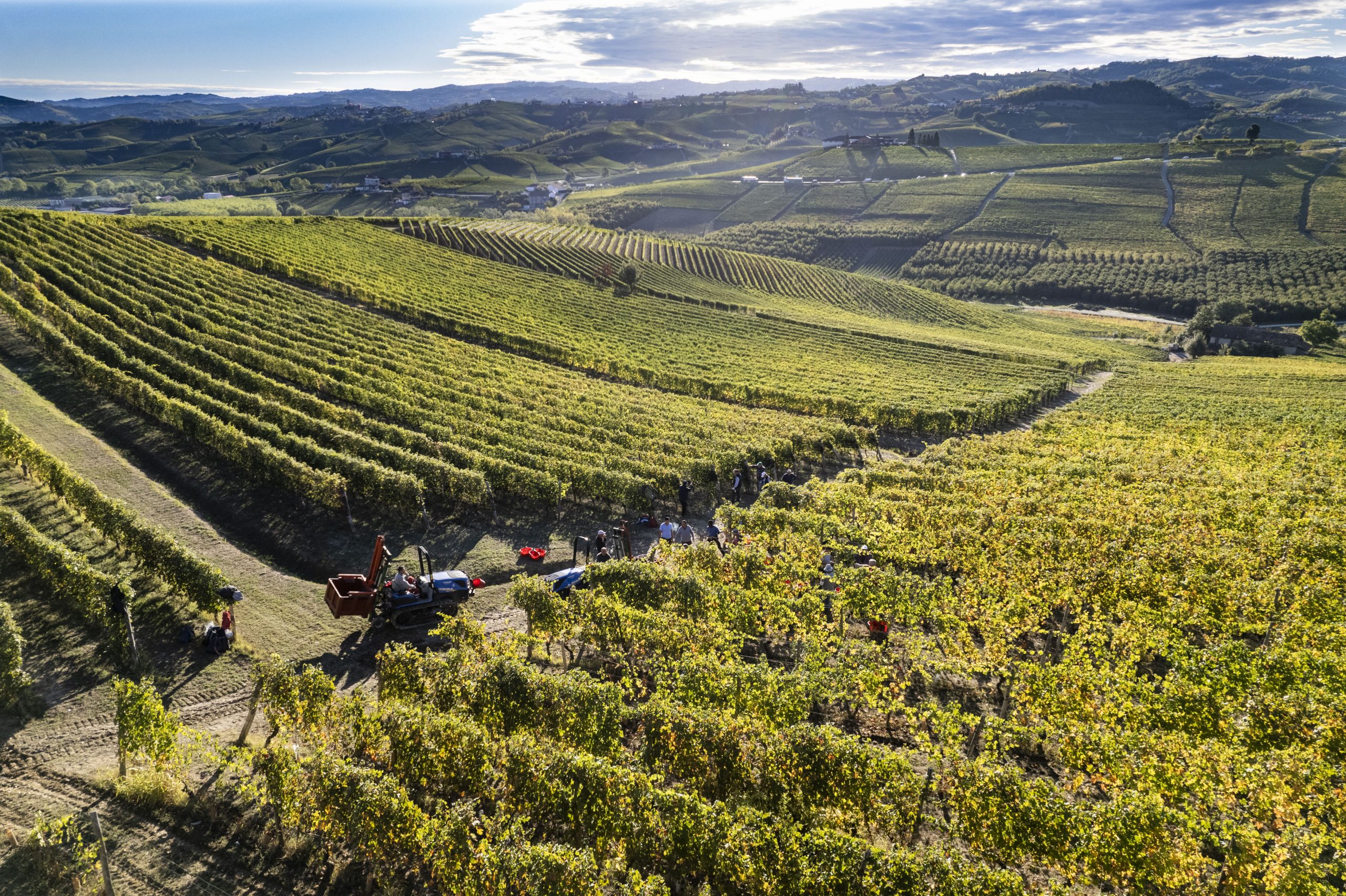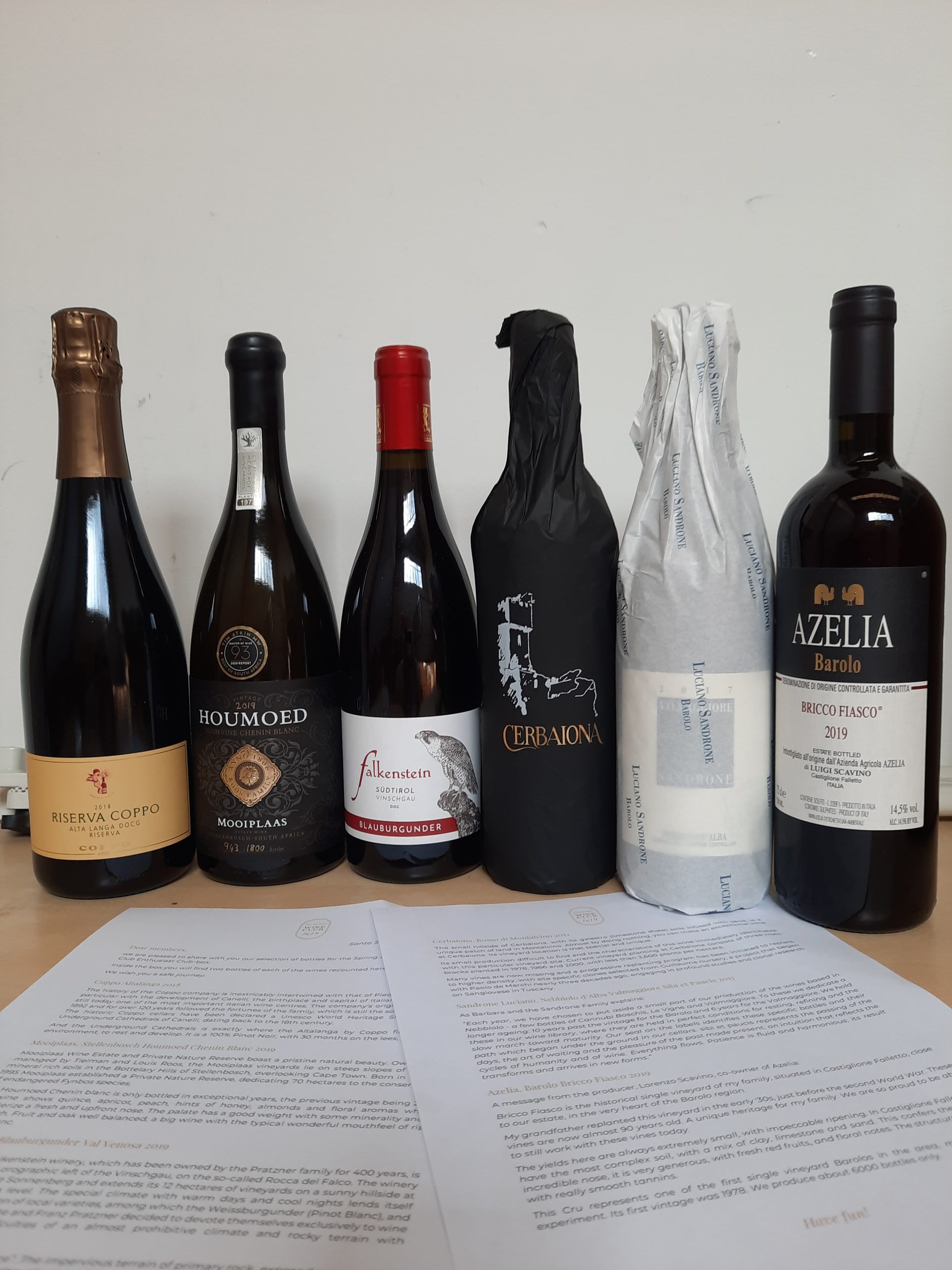Ecco cosa hanno ricevuto i soci “Connoisseur” del San Maurizio Wine Club nella Box di questo inverno!
Marcoalberto, S.R. 2012
The small family winery was born in the heart of Santo Stefano Belbo and gravitates within a small house. Here, in the historic cellar dug into the tuff, dating back to the first half of the 19th century, the first bottles of Metodo Classico were put to ‘rest’. In recent times, the winemaking premises have been moved to an old farmhouse a few steps away from the company headquarters, another small enclave in the historic centre of the village.
Rather than a single vineyard, in this case we are talking about rigorous selection of grapes from several plots (60% Pinot Noir, 40% Chardonnay) growing at altitudes ranging from 300 to 550 metres. The soil is mostly calcareous, loamy, rich in sand and tuff. All this is essential to guarantee Marcalberto wines elegance and complexity, tension, and depth.
The 2012 vintage was, already at the first degorgement, in 2017, an outstanding example of Marco and Alberto’s ability. From there, the decision to leave a small quantity of bottles on the lees, to make a “Sboccatura Recente” (Recent Disgorgement): S.R. version. A way to gift clients with a very limited-number experience of a out-of-the-ordinary wine.
Château Fuissé, Pouilly-Fuissé Village “Collection Privée” 2001
Château Fuissé has belonged to the Vincent family for 5 generations, making it a landmark estate in southern Bourgogne. The Pouilly-Fuissé Collection Privée du Château-Fuissé is a blend of the three complementary “Climats” of Pouilly-Fuissé held by Château-Fuissé as a monopoly.
The result of a rigorous selection of old Château-Fuissé vines with very limited yields. After five years of ageing in the château’s cellars, the Pouilly-Fuissé Collection Privée offers wine-lovers a unique tasting experience.
Over three centuries, the family that owns Château Fuissé has passed down its mastery of winemaking from generation to generation, channeling that excellence into the 2001 Pouilly-Fuissé Collection Privée. More evolved than its counterpart from the previous year, this chardonnay boasts a lively yet mature bouquet.
La Spinetta, Pin 2013
A postcard from Piedmont to express all the love for our land, a sentiment that Giuseppe Rivetti, known as ‘Pin’, taught his sons Carlo, Bruno and Giorgio. The synergy between Barbera and Nebbiolo gives a bouquet of fruit, flowers and spices. The balance between tannins and acidity makes this wine a perfect companion for food.
Maceration and alcoholic fermentation in temperature-controlled tanks for an average period of 14-15 days. Malolactic fermentation in French oak barrels, second and third passage, and subsequent ageing for 12 months. Maturation in the bottle for about 6 months.
The first vintage produced of this wine is 1989, the average production is 8,000 bottles.
Conterno Giacomo, Nebbiolo Vigna Arione 2019
Giacomo Conterno is one of the most important names on the Piedmont wine scene: the winery is now recognised worldwide for its historicity and for the production of two oenological monuments such as Barolo Riserva Monfortino and Barolo Cascina Francia.
Giacomo Conterno’s Nebbiolo d’Alba Vigna Arione is the new entry in the Conterno house, of which 2019 is the first vintage. The vineyard is apt to produce Barolo, but for the moment Roberto Conterno, owner and winemaker, is choosing to release this wine as a Nebbiolo, to allow the young vines to grow some more and, in the meanwhile, he surprises his clientele with this original Nebbiolo.
Here, too, we are faced with a sublime example of the winery’s winemaking techniques, with long macerations, passages in large wooden barrels for 3 years, and the utmost care in every detail.
Prunotto, Barolo Bussia Vigna Colonnello 2008
The project began in 1904 as a ‘Cantina Sociale’, with contributions from local producers. Soon, however, due to economic difficulties, the business was liquidated and Alfredo Prunotto, one of the founders of the project, with his wife Luigina, decided to take over the property, making it famous and bringing the names of Barolo and Barbaresco to the world. In 1959, Alfredo Prunotto retired from the business and left the property to his friend and famous wine expert Beppe Colla. The latter embarked in the project of identifying the vineyards and plots that can best express the grape varieties and appellations. In 1994, Beppe Colla and his brother retired to run the family business, handing over production to the Tuscan Antinori family.
In 1961, the first Bussia Vigna Colonnello was produced from a single hectare in Monforte. Here, the soils of ancient formation in different geological eras, Tortonian and Helvetian, that characterise the Barolo area, combine to give wines that succeed in integrating the characteristics of both, making this area a ‘unicum’ of its own within the Bussia cru and the entire Barolo appellation. The vineyard, situated south-west, 300 metres above sea level, with soils rich in clay, silt and sand, has been owned by the company since 1994.
Fermentation with the stems (partially) in steel, then ageing in French oak barrels for 24 months and a further 12 months in steel.
Biondi Santi, Brunello di Montalcino 2008
The Brunello di Montalcino owes its existence to the inventiveness of Clemente Santi and his nephew Ferruccio Biondi Santi, who in the 1900s began vinifying Sangiovese Grosso in Montalcino. Since 1888, the first vintage of Brunello in history, Biondi-Santi has continued to produce wines renowned for their elegance and extraordinary longevity.
The 2008 Riserva was produced with the Sangiovese Grosso clone BBS11 (Brunello Biondi Santi 11), identified and selected by Biondi-Santi at Tenuta Greppo in the 1970s from the estate’s oldest vines. Aged for 3 years in Slavonian oak barrels, followed by a very long resting period in the bottle in the quiet and dark of “La Storica”, the Tenuta Greppo’s ageing cellar, where all the historic vintages of Biondi-Santi’s Riserva are scrupulously preserved.
E le sorprese non sono finite! Qui sotto, le bottiglie ricevute dai soci “Enthusiast”







